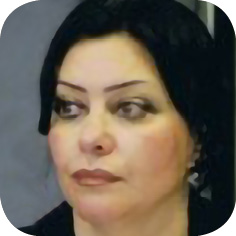Jerusalem has always been the political, administrative, and spiritual heart of Palestine due to its history, geographic centrality, commercial vitality, and wealth of religious and cultural sites. The Ottomans considered Jerusalem to be of great religious significance as the third holiest site in Islam after Mecca and Medina. In the nineteenth century, Jerusalem experienced two periods of administrative, political, social, economic, and military reforms. The first being under the rule of Ibrahim Mohammed Ali, and the second, during the Tanzimat era. Numerous advancements and activities during this period changed life in the city in many ways.
These activities, combined with Ottoman reforms that were taking place throughout the Empire, fashioned Jerusalem into a very different city at the end of the Ottoman reign in terms of population, physical layout, buildings, and infrastructure. Jerusalem was the site of a very important reform in Ottoman administration, and in 1863, a special firman given by Sultan Abdul Aziz Ibn Mahmoud II created a municipal council (majlis baladi).
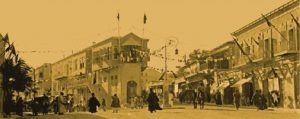
American Colony photo/public domain.
Founded in the spirit of the centralizing reforms known as the Tanzimat, evaluated as a process of change and reorganization, the municipal council was established as a means of connecting the municipal administration to imperial dependence. The council did not actually commence its work until 1867 (some attribute this to the lack of a regulating law), but when the Districts’ Administration Law was enacted in 1871, the council began to engage in some actions.
Mustafa Murad ed-Dabbagh described the first municipal council in his Our Country Palestine: “… it was a small entity, with limited authorities, minimum revenues that did not exceed 500 gold liras and no bylaw.” Following the enactment of the Municipalities’ Administration Law in 1877, however, the actions of the municipal council were more prominent.
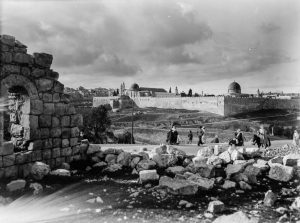
The council was seen as a body that represented various social and sectarian groups, and it regulated the local government’s relations with community, managing daily affairs. The municipality had to undertake tasks in coordination with other bodies of the government. It took powers from the porte’ in Istanbul and the wali who represented the Ottoman Sultan in Jerusalem, called the mutasarrif.
The powers and missions of the municipality, as well as the mode of formation, became clearer following enactment of the Municipalities Law of 1877, which stated that municipal councils had to include six to twelve members elected for a term of four years.
The right to vote was limited to male Turks over the age of 24, who had to pay a certain property tax. The right to nominate was limited to males who spoke Turkish fluently, were over the age of 29, and who paid property taxes that amounted to no less than that specified in the law and more than the amount paid by voters.
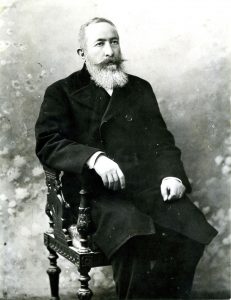
The Municipalities Law detailed the municipality’s duties and responsibilities, which included maintaining public buildings, roads, and markets, supplying water to residents, planning/supervising construction projects, registering births/deaths, supervising restaurants/leisure places, and providing security. Municipality returns came from endowments sent by the central government and from various municipal taxes.
The aforementioned law stipulated that the mayor must be chosen from among the members of the elected council and paid by the municipality, whereas members were unpaid.
It should be mentioned that despite what the Municipalities Law of 1877 stated concerning the election of the municipal council, during the Ottoman period, the members were always appointed, except for once, in 1908, when residents of Jerusalem elected council members without the intervention of the local government.
From the 1880s onward, the municipal council was composed of nine to twelve members elected for a renewable mandate of four years: there were generally six Muslims, two Christians, and one or two Jews on the council (depending on the period), in addition to a maximum of four ex officio members. These were drawn from the city’s professional ranks, including such tradespeople as engineers, doctors, and veterinarians, as well as the head of the police force.
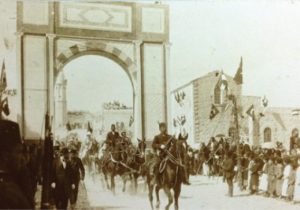
The Ottoman government chose the council president from among the elected members, who mostly included leaders and educated members of the grand clans of Jerusalem and highly qualified persons who had been educated in institutes of higher education in Istanbul and European universities and who were well-informed about the evolution of Western civilization. This reality enabled the successive councils to play effective and influential roles in the development of the city’s infrastructure.
During the period 1863 to 1917, Jerusalem affairs were administered by sixteen mayors, among whom were Abdelrahman al-Dajani, Musa al-Alami, Yusuf Dia’a Pasha al-Khalidi, Faidi al-Alami, Salim al-Husseini, Hussein Salim Pasha al-Husseini, and other clans of Jerusalem.
The municipal minutes provide a clear perspective on Jerusalem’s development during this crucial period. Most items are standardized short texts that indicate routine administrative procedures, such as announcements of store-lease agreements, public bids for civil administration and army needs (munaqasa), public sales of tax-farming rights according to the iltizam system (muzayada), and nominations of municipal staff.
The activities of the municipality were related to the cleanliness of the town and the streets: maintaining the roads and water system, supervising public health, cafés, and restaurants, commercial activities, and so forth. The municipality also controlled a local police force that supervised urban communities and city sanitation.
The visit of German Emperor Wilhelm ll in 1898 resulted in some improvement in the sanitary conditions of the city since preparations for the visit included extensive cleaning operations inside and outside the walls. Linked to the sanitation of the city was street maintenance which, since the 1880s, began to improve due to the pavement of the main roads. In the period preceding the beginning of the World War I, many roads were paved and widened for military purposes.
The municipality improved the sanitary conditions of the city mainly with the support of taxes collected from foreigners. Later in 1911, when a cholera epidemic struck the city, the municipality intensified its efforts to clean the streets and provide other public services. Although Jerusalem had several hospitals, the municipality established a municipal hospital in 1891 that was open to all the inhabitants without distinction of religion or nationality. The municipality was also active in guaranteeing water supplies; foreign companies were called upon in order to try to improve the city’s water supply. In January 1914, the French company Perrier was awarded three concessions in order to develop and manage the electric tramway, electric lights, and water-supply services for the Jerusalem municipality.
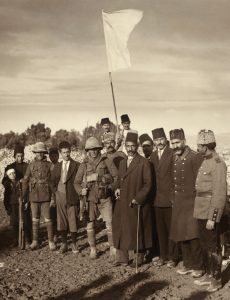
In 1886, the municipality established Palestine’s first professional police force, which was highly respected by local and foreign residents. Reputed as honest, it was often compared favorably to the detachments of the Ottoman army camped outside the city, particularly because municipal policemen were recruited from among the urban population. Eventually some engineers, physicians, and veterinarians became municipality advisers, and there was also a specific municipal office in charge of registering street names and house numbers as well as births and deaths.
The mayor headed the municipality under the supervision of the mutasarrif (governor). The office of mayor was considered very influential, and therefore the most important families of Jerusalem regarded it as a source of power and competed in order to be appointed to this office. Until 1908, the municipal council was composed of only Arab Muslim and Christian members. Later on, in 1908, Jews also took part in the elections and eventually the first Jewish councilor was elected.
Income-generation was one of the main activities of the municipality, which owned a large number of stores and several hotels in the city that were rented out on a yearly basis.
In 1870, the municipality installed a sewage system, and in the 1890s, regular garbage collection was introduced, kerosene lamps were installed, and during certain times of the year, the streets were sprinkled with water to control the dust. A city park was opened to the public in the new city on Jaffa Street in 1892, in front of the Russian compound where a military band performed on Fridays and Sundays.
Just before World War I, trees were planted along some streets, and plans were made to bring tram lines and a telephone system to the city. In 1914, an order was granted by the Jerusalem municipality to provide electricity to the city. The municipality began to issue building permits, and a register of these was kept from the late-nineteenth century onwards, and in 1907, a law was passed that required inhabitants to obtain a permit to build or enlarge their homes.
The last council that was formed during the Ottoman era included ten members: six Muslims, two Christians, and two Jews. Hussein Salim al-Husseini was the last mayor of Jerusalem (1909–1917) during the Ottoman period, and his very last mission was handing the city to the British forces.
When it came to the actors involved in municipal life, we can assert that Muslims, Christians, and Jews of various origins appeared at all levels on the council: in the administration, in public-service positions, and as beneficiaries of public service. We find many members of notable Jerusalem families (‘ayan) at all levels of the municipal staff, not only at the top. But there are also many council members and high-ranking municipal officers who are neither Muslim nor members of those families.
As for the functioning of this administration, the municipal council reacted to the citizens’ needs as well as to orders given by the imperial administration. The council was in direct contact with the administrative council in Jerusalem and with various imperial ministries and directorates in Istanbul. It led important infrastructure projects in and around Jerusalem, such as the building of roads and the railway and the modernization of the water-supply system. It was very active in the area of food safety, hygiene, and public health issues (including slaughter practices, food preservation, and vaccination campaigns). It applied the rules of urban planning and enforced them. It also appealed to legal bodies in case of conflicts.

